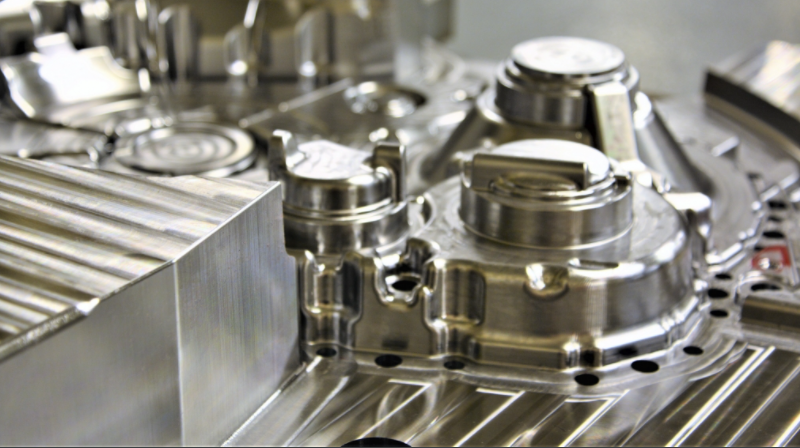Resin sand and EPC are the most typical casting techniques for aluminum castings, followed by more specialized techniques such as metal mold casting, investment casting, gypsum mold casting, etc. Depending on the material used, sand mold casting may be classified as either clay sand mold, adhesive sand mold, resin self hardening sand mold, epoxy sand mold, or even EPC. The clay sand surface dry sand mold, the dry sand mold, or any other sand molds should be considered when the wet mold fails to provide. Castings made using green sand may weigh anything from a few to tens of kilos, whereas those made using dry molds might weigh several to tens of tons. The process used to cast aluminum for mass manufacturing must be adequate. Because of the high cost of the tools and molds required, casting processes such as low pressure casting, die casting, and centrifugal casting are limited to batch manufacturing.

Now we’ll talk about how aluminum casting leakage is fixed:
1. The far end’s pressure or wall thickness is unstable. Eradicating a certain amount of pressure;
2. Both simulation filling and real-world sample debugging analysis may be used to evaluate it. Enhance the gates to a reasonable degree;
3. Pick a high-quality alloy.
4. Examine the aluminum casting for entrapment in the hot stamping stage if the alloy flow is not adequately fused. Install an exhaust duct and a bag for collecting slag.
5. Find the heat junction using X-ray fault detection. If the heat junction is a leak, the customer engineer may help determine how to modify the construction to decrease the wall thickness. Furthermore, the leakage at the pyrolysis site may be resolved by using the secondary extrusion process;
6. If processing is unavoidable, try to keep your machining allowance to a minimum.
7. X-ray defect detection must be used to check the interior quality of aluminum casting. Cool the smelting process down to an acceptable level;
8. X-ray defect detection is required to check the interior quality of aluminum castings. Low-emission paint should be used, and dipping treatment must be applied to aluminum castings.
9. As a qualification method for the pressure test apparatus, use certified aluminum castings. Instruments for routine maintenance and inspections;
10. A pressure test may reveal the answer. Improve process safety and fix leaks as soon as possible;
11. You can check the flatness of something. Don’t let the production pressure drop for too long and make sure the process continues smoothly. Keep the procedure from causing any extrusion.
Decorative coatings may be obtained using a variety of chemical dip coating processes for aluminum castings. You may choose to paint your aluminum castings or not. Chemical treatment is not sufficient on its own, but it may be used as a preparatory step before painting, if that is necessary. Cleaning the surface of any leftover chemical solution is as simple as rinsing it with clean water, wiping it dry, or leaving it to dry on its own. Aluminum castings that require painting should have that process completed as quickly as feasible and with as little contamination to the casting as possible. Using the right primer, enamel, paint, and varnish may be applied to aluminum castings with the same ease as any other material.
Shot blasting for aluminum castings has the following characteristics:
1. It’s worth noting that shot blasting is an efficient method of increasing production. The cleaning process only takes a few minutes thanks to a novel kind of shot blasting equipment that can hurl the shot at a rate of 110–260kg/min at a speed of 50–75m/s directly at the workpiece. Multiple shot blasting devices may be used simultaneously to blast a huge number or big size of parts.
2. It may be used to clean, buff, and polish the surface of the components it treats. The attachments, thin edges, fins, and stains on the surface may be removed, and the scratches can be eliminated, all with the use of shot blasting, revealing the substrate’s natural color.
3. Diffuse the surface tension. During the cooling process, components might develop surface stresses due to variations in wall thickness and cooling rates. As a result of shot blasting, the surface structure may be eliminated, the surface stress (tensile stress) concentration can be reduced, fatigue strength can be enhanced, and the surface hardness can be somewhat increased.
4. Improve the way things look on the outside. To create a concave mirror effect, the spherical shot is used on a similarly spherical workpiece. The way it shimmers and shines in the light, reminiscent of stars, is quite aesthetically beautiful.
5. Strengthen the bond between the coating and the surface. Ra 1.6–6.3 m is a typical roughness following shot blasting. Adhesion is improved when paint or other coatings are applied due to the increased surface area and the simultaneous removal of surface debris.
6. It’s a quick and easy procedure that helps you save money. The expense of the machinery needed for washing and drying after liquid sand blasting is avoided when dry shot blasting is used in conjunction with a dedusting system.
In many cases, no further treatment is necessary, since corrosion may be prevented by the carrier coating on the surface of aluminum casting. A nice smooth surface may be attained mechanically using processes like roll grinding aluminum castings with chosen abrasives and polishing chemicals in a roller. Depending on the alloy and hardness of the casting aluminum, polishing may provide a smooth and shiny surface on the casting. You can get a flat, matte finish with a wire brush, or a textured finish with shot peening. Some treatments, including electroplating, painting, and anodizing, may protect components from corrosion and make them appear nice.

